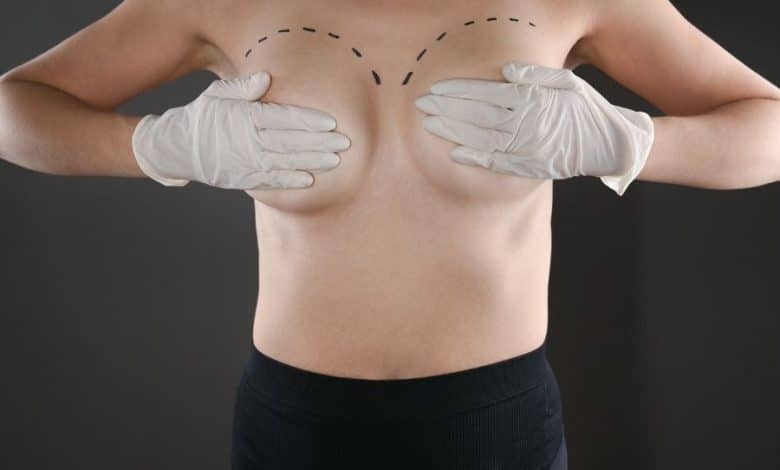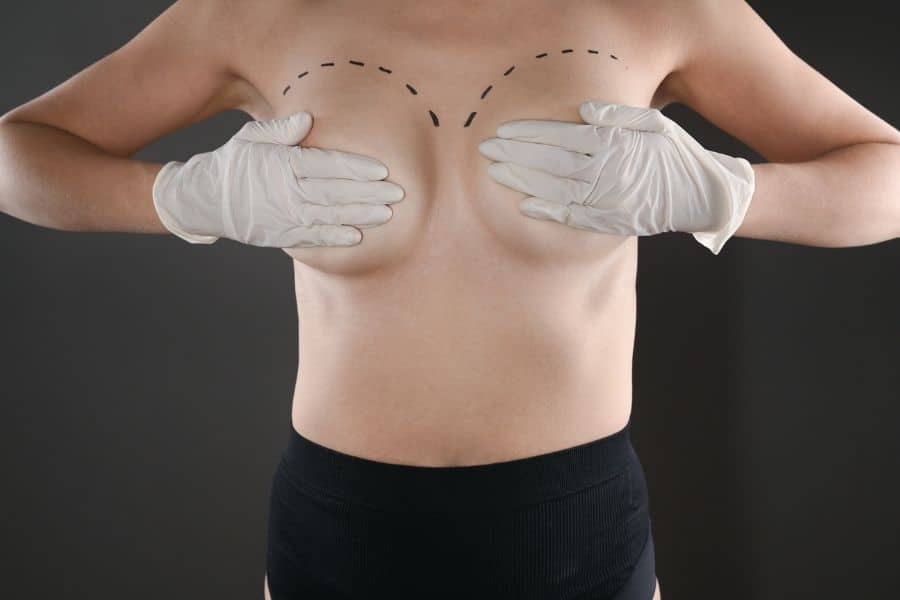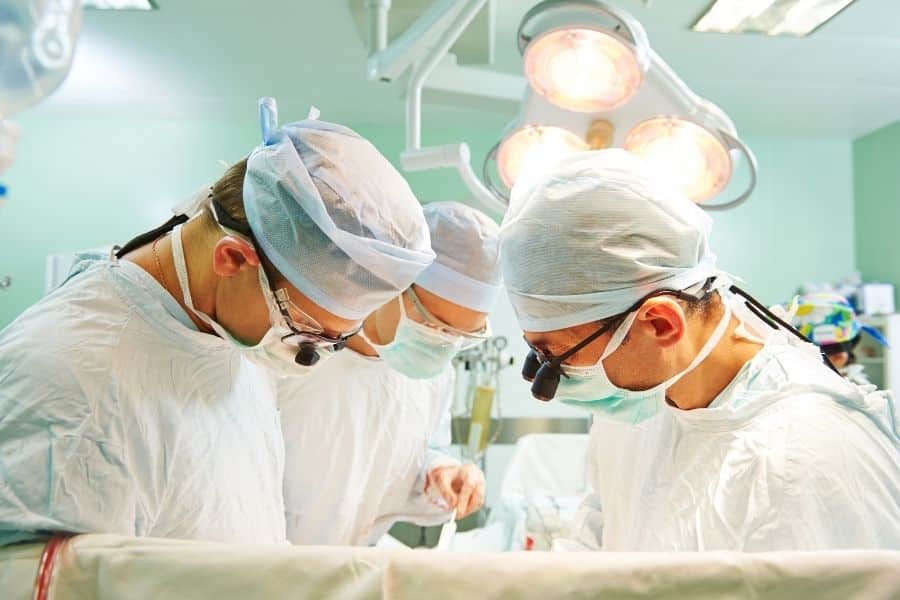Breast Reduction Surgery

Breast reduction surgery is a surgical procedure to relieve physical discomfort caused by excessively large breast size. An overly large breast size can cause a number of health problems, including back pain, neck pain, skin irritation, poor posture, even shortness of breath.
During breast reduction surgery, excess breast tissue and skin is removed and the breast is reshaped. The nipple and nipple circumference are also brought to an appropriate size. The procedure is usually done under general anesthesia and takes 2-4 hours.
After breast reduction surgery, patients usually show symptoms such as pain, swelling and bruising. The recovery process varies according to the general health status of the patient and the procedure performed. After the procedure, patients can usually return to work within a few days, but it is important to avoid heavy physical activities and wear a supportive bra.
Because breast reduction surgery carries some risks, it is important to talk to a doctor and learn about the advantages and disadvantages of the procedure before having this procedure. Also, there may be changes in the ability to breastfeed after surgery.
İçindekiler
What is Breast Reduction Surgery?
Breast reduction surgery is a surgical procedure that is performed to reduce the size of breasts that have excess breast tissue and are large. This surgery is preferred to reduce the large breast sizes that hinder women’s daily life activities. Large breast sizes can cause health problems such as back pain, neck pain, shoulder pain, headache, skin irritation, difficulty exercising and doing sports. Breast reduction surgery can help alleviate these problems by reducing breast size. Surgery can also be done to correct breast shape and position. However, since breast reduction surgery is a surgical procedure, it also involves medical risks and complications and therefore a good evaluation with the doctor before the operation is required.

Who Can Have Breast Reduction Surgery?
Breast reduction surgery is performed on women who have health problems due to their large breast size. Generally, women with breast sizes D or larger may be good candidates for breast reduction surgery, as it can cause health problems such as back pain, neck pain, shoulder pain, headache, skin irritation, and difficulty exercising and playing sports. In addition, women who have low self-confidence or body image problems due to breast size may also opt for breast reduction surgery. However, you should meet with a plastic surgeon to determine if you are a suitable candidate for breast reduction surgery. The plastic surgeon will evaluate your health and whether the surgery is suitable for you.

Before Breast Reduction Surgery
Some preparations and precautions should be taken before breast reduction surgery. These may include:
Meeting with a plastic surgeon: The most important step for breast reduction surgery is to meet with a plastic surgeon. The surgeon will evaluate your health status and whether the surgery is suitable for you, give information about the surgical process and explain what needs to be done before and after the surgery.
Evaluation of health status: Before surgery, a series of tests may be performed to evaluate your health status. These tests may include tests such as blood tests, electrocardiogram (ECG), and breast imaging (mammogram).
Quitting smoking and alcohol use: Smoking and alcohol use should be stopped before the surgery. Smoking and alcohol can adversely affect post-operative recovery.
Taking medications: Certain medications may need to be taken before surgery. These should not be blood thinners or drugs that increase the risk of bleeding, such as aspirin. Also, taking certain medications, such as vitamin supplements, may not be recommended.
Preparation for the day of surgery: A number of instructions may be required before surgery to prepare for the day of surgery. These instructions may include issues such as the last meal and drink times before surgery, surgical clothing, post-operative care, and what to do at home.
Getting support: It’s important to get support from someone (for example, family or friend) to help with the post-operative recovery. In addition, planning for work and household chores after surgery may be required.

How is Breast Reduction Surgery Performed?
Breast reduction surgery is usually performed under general anesthesia and can take 2-4 hours. How the surgery is performed may vary depending on the patient’s breast size and desired results. However, the following steps are generally followed:
Anesthesia: General anesthesia is applied to the patient before the operation.
Incisions: The plastic surgeon makes incisions in the upper part of the breast, around the nipple, or in the crease under the breast.
Tissue removal: The surgeon removes excess fat, tissues, and skin to shrink breast tissue.
Nipple position: The nipple can be moved to a higher position to make it proportional to smaller breasts.
Stitches: The sutures used in breast reduction surgery can be dissolving stitches or traditional stitches.
Recovery process: After the surgery, the patient is kept under observation for a few hours and is usually discharged from the hospital on the same day. The surgeon will provide information about the post-operative recovery process and explain what needs to be done at home.
In the postoperative period, the patient should sleep on his back, avoid heavy lifting and avoid exercises for a certain period of time. He may also need to wear a special bra for several weeks to speed up the healing process. Recovery time in the post-operative period may vary from person to person, and the full recovery process may take several months.
Postoperative Result
After breast reduction surgery, patients’ breasts usually become smaller, firmer and more proportional. The aesthetic and functional benefits of this surgery may include:
A more comfortable life: After breast reduction surgery, patients’ physical discomforts such as back, neck and shoulder pain may decrease. In addition, smaller breast size can increase freedom of movement, resulting in a more comfortable life.
Aesthetic appearance: After breast reduction surgery, the breasts become more proportional and give a more harmonious appearance to the patients’ bodies.
Better posture: Large breasts can affect the balance of the body and cause poor posture. After breast reduction surgery, patients’ posture can improve.
Skin problems: Sweating and rubbing under large breasts can cause skin irritation, infections and sores. Breast reduction surgery can help prevent or treat such skin problems.
Post-operative results may vary depending on factors such as the patient’s breast size, skin elasticity, and body type. However, after breast reduction surgery, it can be said that the breasts of patients generally become smaller, firmer and more proportional.
Is There a Risk of Breast Reduction Surgery?
Like any surgery, breast reduction surgery involves risks. However, these risks are generally low, and the experience of the operating surgeon and the patient’s health may also affect the risks. Possible risks of breast reduction surgery may include:
Bleeding: Bleeding may occur during or after surgery. Rarely, additional surgical intervention may be required due to severe bleeding.
Infection: As with any surgical procedure, there is a risk of infection after breast reduction surgery.
Anesthesia complications: In surgeries performed under general anesthesia, anesthesia-related complications, although rare, can occur.
Skin death: In rare cases, skin death may occur on the nipple or surrounding skin after breast reduction surgery.
Wound healing problems: Postoperative wound healing problems may occur. Stitches may open, the wound may become infected, or wound healing may be delayed.
Sensory changes: After breast reduction surgery, sensory changes may occur in or around the nipple.
Asymmetries: Asymmetric breasts are a rare complication after breast reduction surgery.
A careful pre-operative examination and careful work during the operation are important to minimize the risks. Your surgeon will give you detailed information about the risks before the surgery.

Frequently Asked Questions About Breast Reduction Surgery
Is breast reduction surgery painful?
Breast reduction surgery is usually performed under general anesthesia and anesthesia is applied so that patients do not feel pain during the surgery. After the surgery, you may feel pain and discomfort, but this can be controlled with painkillers.
How long will it take to recover after breast reduction surgery?
The healing process can vary from patient to patient, but you can usually return to normal activities within a few weeks after breast reduction surgery. Full recovery may take several months.
Will there be any scars after breast reduction surgery?
After breast reduction surgery, scars may occur. However, your surgeon will try to minimize scars using their techniques. The scars will begin to fade over time.
Can I breastfeed after breast reduction surgery?
After breast reduction surgery, it is possible for nerves and blood vessels in the nipple and nipple area to be damaged, which can affect your ability to breastfeed. However, your surgeon will try to preserve your ability to breastfeed using their technique.
Can it grow back after breast reduction surgery?
After breast reduction surgery, you will not experience any increase in your breast size. However, it is possible for your breasts to regrow for reasons such as weight gain or hormone changes.
At what age can breast reduction surgery be performed?
Breast reduction surgery is usually performed after breast development is completed, that is, after puberty. However, breast reduction surgery can be performed at any age.
Does having breast reduction surgery increase my risk of breast cancer?
Breast reduction surgery does not increase the risk of breast cancer. However, breast reduction surgery is not recommended for women at risk of breast cancer.

Does Breast Reduction Surgery Prevent Breastfeeding?
After breast reduction surgery, the ability to breastfeed may decrease or disappear completely. Nerves and blood vessels in the nipple and nipple area can be damaged during breast reduction surgery, which can affect the ability to breastfeed. Also, removal or remodeling of breast tissue can affect breastfeeding ability.
However, some women who have breast reduction surgery may retain their ability to breastfeed or be only slightly affected. Before and after surgery, it is important to talk in detail with your surgeon about breastfeeding. Your surgeon will try to use the best possible techniques to preserve your ability to breastfeed.

How Many Hours Does Breast Reduction Surgery Take?
The duration of breast reduction surgery may vary depending on the patient’s breast size, shape and the details of the surgery. Usually, the surgery takes between 2 and 4 hours. However, in some cases it may take longer. The duration of the surgery, the general health status of the patient, his weight, and the complexity of the area where the surgery will be performed may also affect. Before breast reduction surgery, your surgeon will explain the details of the operation and inform you about the duration of the operation.

Is It Harmful to Lose Weight After Breast Reduction Surgery?
Losing weight after breast reduction surgery is usually not harmful, but gaining or losing weight after surgery can affect breast size and shape.
During breast reduction surgery, some of the breast tissue is removed and the remaining tissues are reshaped. Therefore, losing weight after surgery can further reduce breast size or change the shape of the breasts. Likewise, gaining weight after surgery can cause breast size regrowth.
Therefore, after breast reduction surgery, it is important to maintain your ideal weight. To avoid weight changes after surgery, it will be beneficial to maintain a healthy lifestyle, eat a balanced diet and exercise regularly.

Is There Any Scar After Breast Reduction Surgery?
After breast reduction surgery, obvious scars may occur on the breast, but it may vary according to the method of the surgery and the skin type of the person. The surgical technique and cuts used during the surgery can affect the size, shape and location of the scars.
The traditional method of breast reduction surgery involves a vertical cut around the nipple, under the breast, and around the nipple. This method is often used to best correct the size and shape of the breast, but there may be obvious scars due to these cuts.
Newer techniques aim to leave fewer cuts and scars in breast reduction surgery. These include the “lollipop” and “anchor” techniques. In these techniques, the cut around the nipple merges with a vertical cut under the nipple, and a horizontal cut is made under the breast. These techniques tend to leave fewer scars than traditional methods.
However, since everyone’s skin structure and healing process is different, the size and appearance of the scars may vary from person to person. Also, careful post-operative care can help reduce scars during the healing process. Before surgery, your surgeon will give you detailed information about the scars and the healing process.

How Much Is Breast Reduction Surgery 2023 Price?
The price of breast reduction surgery depends on many factors. These factors include the surgeon’s experience and expertise, the location of the surgery, the patient’s needs, and the method of surgery.
Also, prices vary by country, region and even hospitals. Therefore, you need to get a price quote from the health institutions in your country or region. It’s also important to find out if your health insurance covers breast reduction surgery. Some insurance companies may cover breast reduction surgery, while others may not or partially pay.
However, the price of breast reduction surgery is usually higher than other cosmetic surgery procedures. The cost of the surgery usually includes factors such as pre-operative examinations, the surgery itself, anesthesia, hospital or surgical center fees, post-operative care and monitoring.




